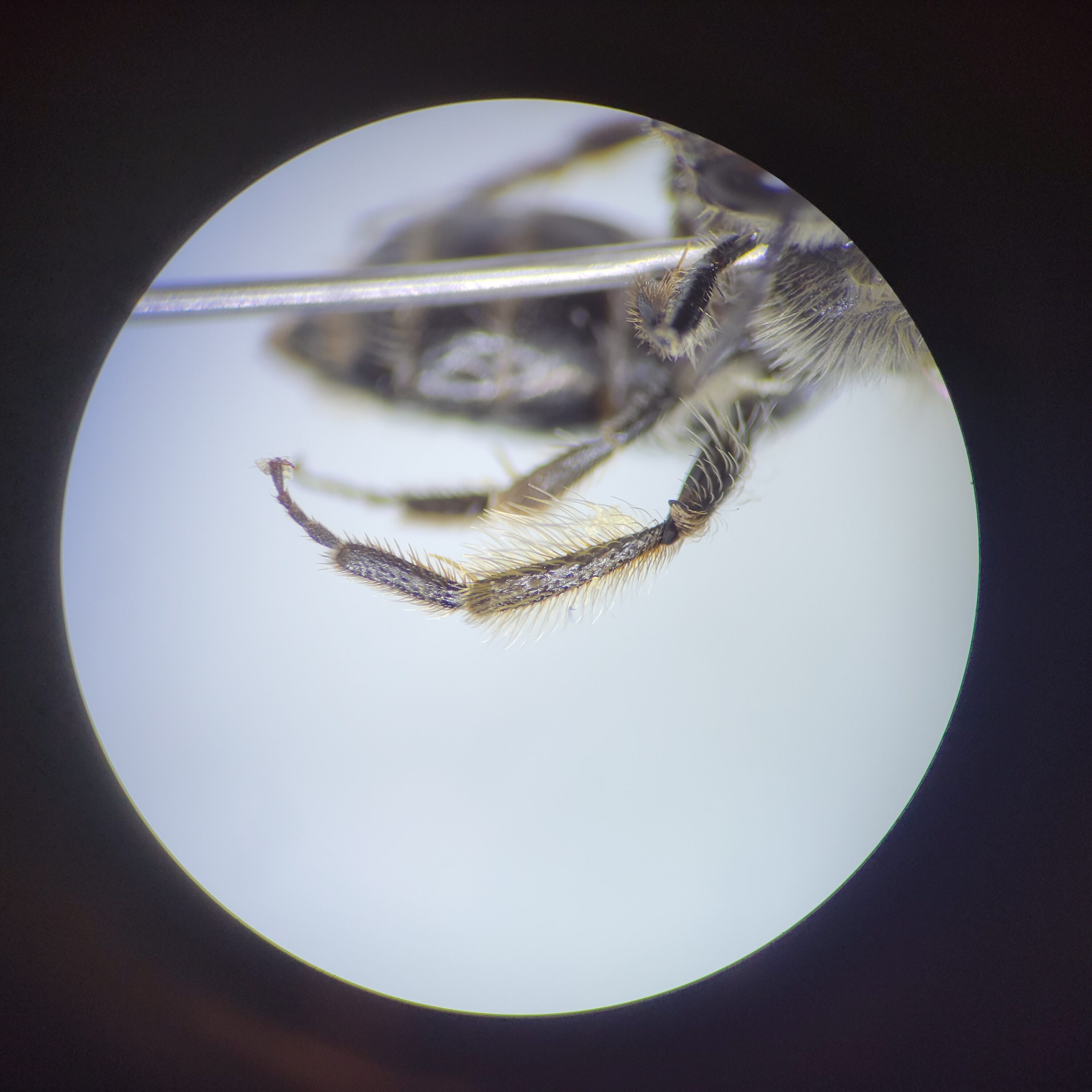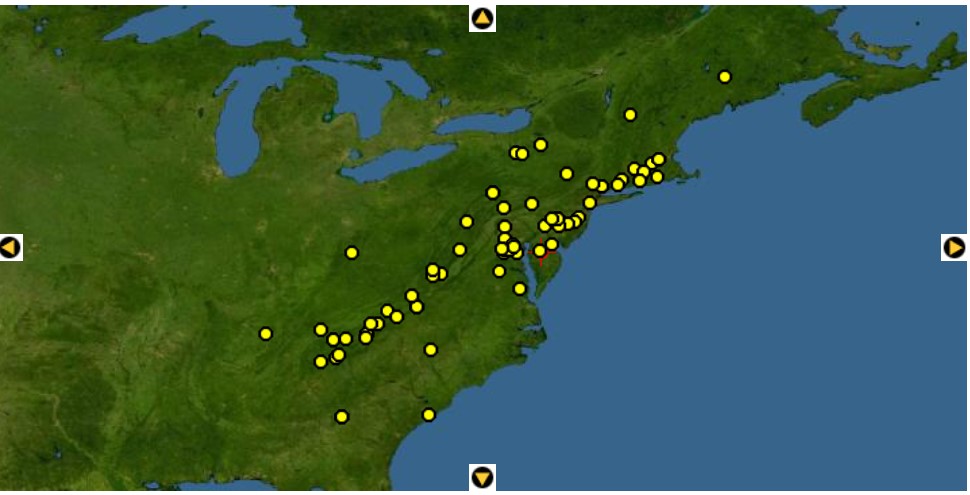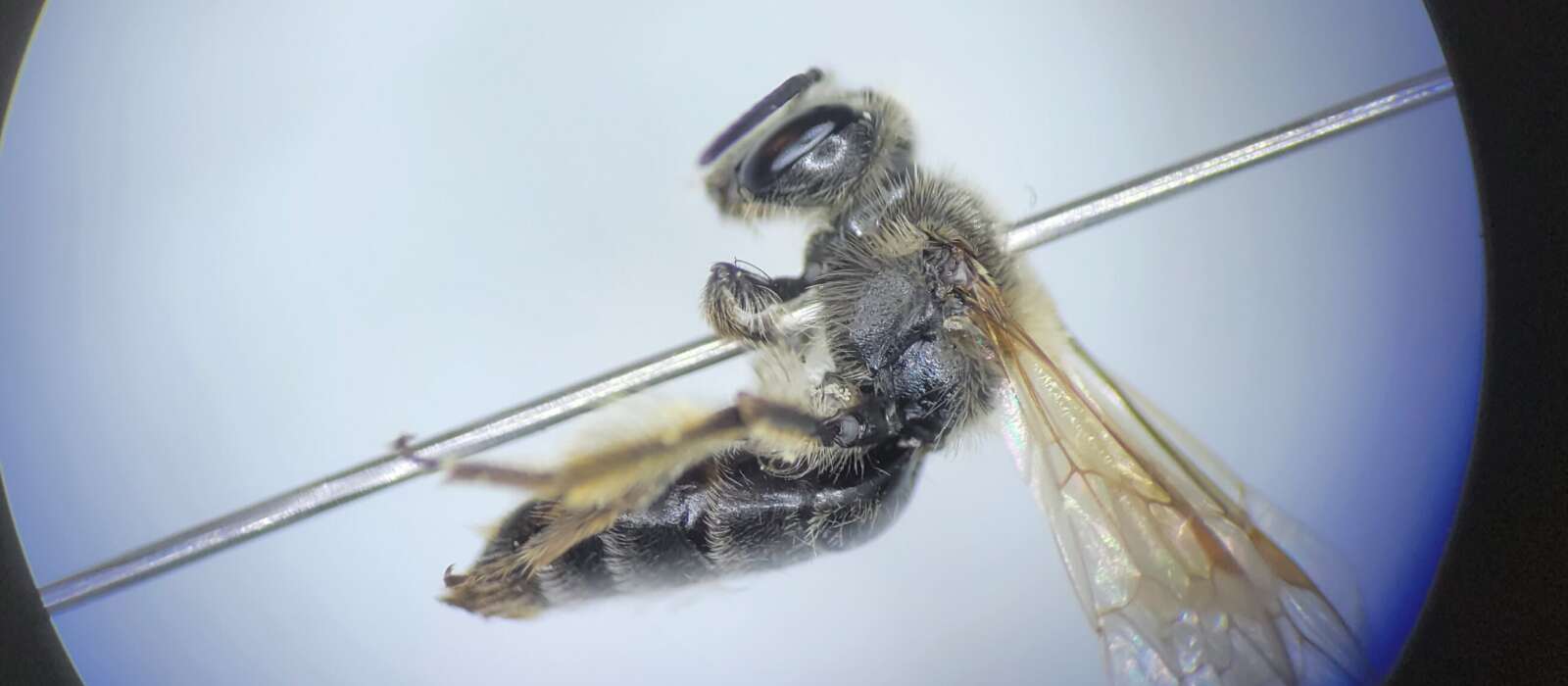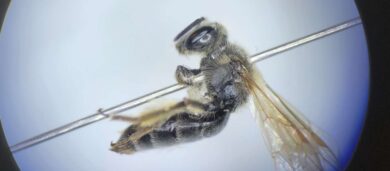Andrena cornelli added to the Vineyard bee checklist
The latest addition to the Vineyard’s steadily growing bee checklist came courtesy of alert work by naturalist Sharon Britton. Keeping an eye out for bees on flowers in her West Tisbury yard, Sharon photographed several individuals on May 22, 2023. She submitted her observations to iNaturalist, and the images were identified by Max McCarthy, a bee expert at Rutgers University, as Azalea Mining Bees, Andrena cornelli.
A. cornelli is an oligolectic (pollen specialist) bee strongly associated with azaleas and related plants. Assuming the Vineyard population is native, it probably associates closely with swamp azalea, Rhododendron viscosum. Sharon found hers, however, on a white-flowered rhododendron cultivar. You can view one of Sharon’s iNaturalist observations here.
Closely related to several other Andrena species, the Andrena Miner Bee has one notable feature that really stands out. The tibial scopae – hairs on the hind legs of females, specialized for pollen collection – are highly distinctive: sparse, long, and unbranched. The form of these hairs evolved to efficiently collect and carry the large pollen grains of this bee’s preferred flowers. Sharon caught a couple of specimens and delivered them to the BiodiversityWorks office, where I was able to confirm the identification using a key and take detailed pictures of the bees through a dissecting microscope.

Tibial scopae of a female Andrena cornelli.
Andrena cornelli brings to 193 the total number of bees known from Martha’s Vineyard. Most of those species (186) were documented in the course of a major study coordinated in 2010-2011 by entomologists Paul Goldstein and John Ascher. But island naturalists have been slowly but steadily adding new species to the list, and it is safe to assume that, between species here but not yet detected and species that may arrive here in the future, there are plenty more bee discoveries to be made.

Distribution of Andrena cornelli records (from Discover Life)
Interestingly, of the seven bee species added since the Goldstein/Ascher study, only one has been found in what one would think of as high-quality natural habitat. The others have turned up, like Sharon’s Andrena cornelli, in residential yards or similar disturbed settings. This in no way implies that quality habitat is unimportant for bees, especially for specialized ones! But it does show the merit of regular coverage. You find interesting things where you look, not where you don’t look, and since yards are easy and convenient to explore, they often produce unusual finds. That’s a good reason to add some native plant, unmanaged areas, water, or other wildlife-friendly resources to your yard, and then pay attention to what shows up. The next addition to a Vineyard checklist might come from your yard.
Matt Pelikan is the director of the Martha’s Vineyard Atlas of Life project at BiodiversityWorks.

